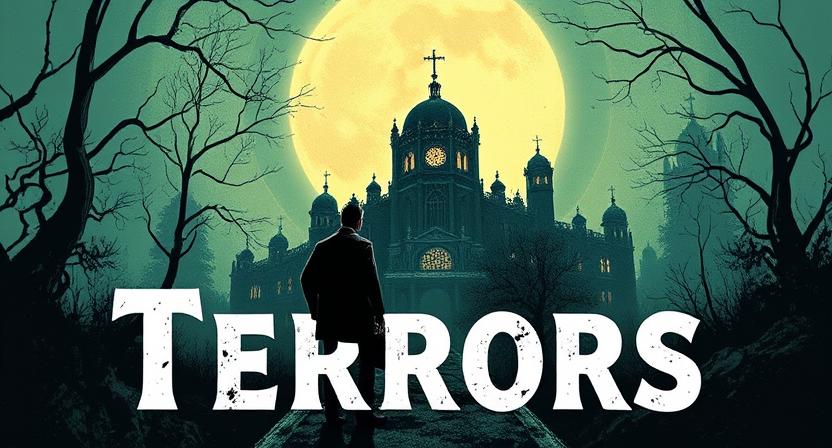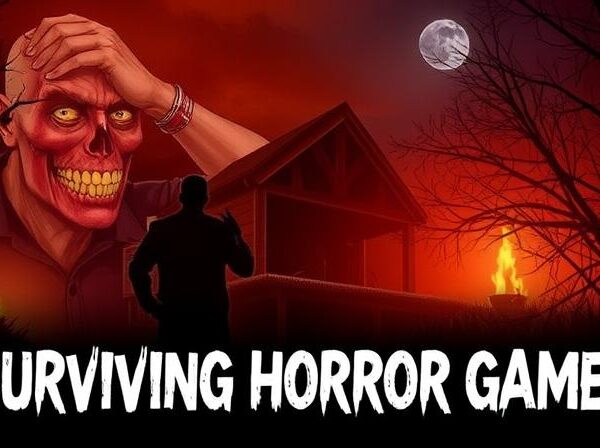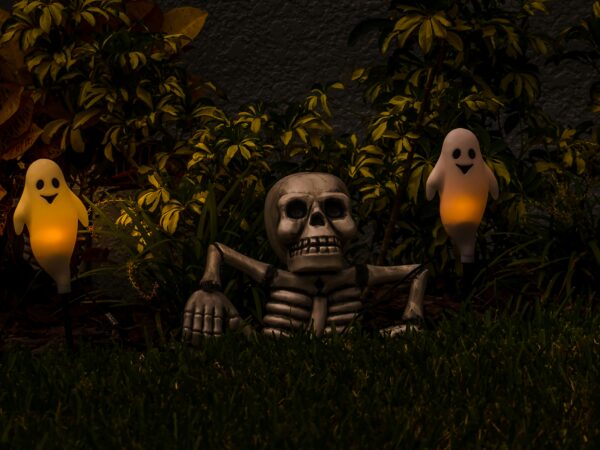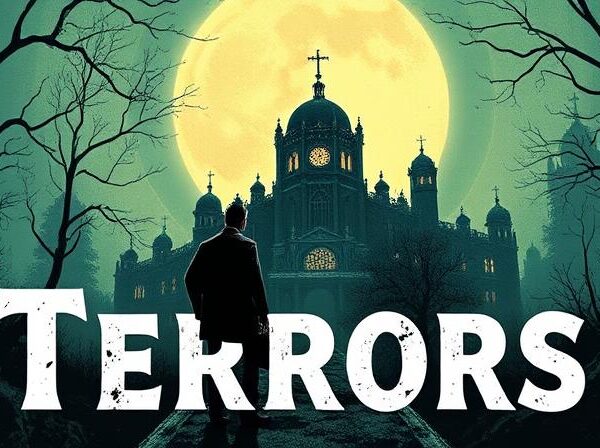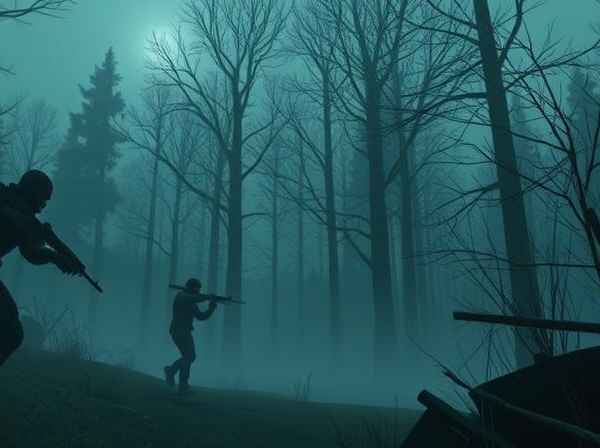Navigating the Terrors: A Survival Guide for Horror Games
Understanding the Genre: Exploring the World of Horror Games
Horror games have emerged as a popular genre within the gaming industry, captivating players with their immersive and spine-chilling experiences. These games are designed to evoke fear and suspense, providing players with an adrenaline-filled adventure like no other. With their dark and atmospheric settings, intricate storylines, and terrifying creatures, horror games offer a unique form of interactive entertainment that keeps players on the edge of their seats.
One of the defining aspects of horror games is their ability to create a sense of atmosphere and tension. Whether it’s exploring a haunted mansion, navigating through a post-apocalyptic wasteland, or venturing into the depths of a nightmare-filled dream, horror games excel at immersing players in their carefully constructed worlds. Their settings often feature dimly lit environments, eerie soundscapes, and disturbing visuals, all aimed at intensifying the feeling of unease. By placing players in these unsettling scenarios, horror games are able to elicit a range of emotions, from apprehension and anxiety to sheer terror
Mastering the Basics: Essential Controls and Game Mechanics
To fully immerse yourself in the world of horror games, it is essential to have a firm grasp of the controls and game mechanics. These elements serve as your gateway to navigating through the chilling environments and interacting with the eerie inhabitants of these virtual nightmares. While each game may have its own unique control scheme, there are some fundamental principles that apply across the genre.
First and foremost, familiarize yourself with the basic movement controls. Most horror games allow you to navigate your character through a variety of terrains, whether it be dimly lit hallways or foreboding forests. Take the time to understand how to walk, run, and interact with your surroundings. Additionally, pay close attention to camera control, as it plays a crucial role in providing you with a comprehensive view of your surroundings. Being able to swiftly pan the camera or look behind you can greatly enhance your awareness and increase your chances of survival.
Building Your Nerve: Overcoming Fear and Anxiety in Horror Games
One of the main appeals of horror games is the adrenaline rush they provide by inducing fear and anxiety in players. However, this can also be a major challenge for those who struggle with these emotions in real life. Overcoming fear and anxiety in horror games requires a combination of self-awareness, mental fortitude, and practice.
One effective way to build your nerve is to start with horror games that have a lower scare factor. Choose games with a lighter tone or ones that are known to be less intense. Slowly exposing yourself to small doses of fear and anxiety can help desensitize you over time. Gradually increase the level of intensity as you become more comfortable. Remember, it’s important to set your own pace and not push yourself too hard too soon.
Resource Management: How to Use Items and Inventory Wisely
Resource management plays a crucial role in the success of any horror game. Knowing how to effectively use your items and inventory can mean the difference between survival and a gruesome demise. One key strategy is to prioritize your resources based on their importance and scarcity. For example, ammunition for weapons should be reserved for critical situations rather than wasted on every enemy encounter. Similarly, health restoratives should be used sparingly, saving them for emergencies when your character’s well-being is at its lowest. By understanding the value of each item and managing them wisely, you can ensure that you have the necessary tools to navigate the terrifying world of the game.
Another aspect of resource management is inventory organization. It is essential to keep your inventory as tidy as possible. This means regularly discarding items that are no longer useful or duplicates of what you already have. Maintaining an organized inventory allows you to quickly locate and access the items you need when you need them. Additionally, some horror games may involve puzzles or locked doors that require specific items to progress. By keeping your inventory free of unnecessary clutter, you can readily identify which key items you possess and easily solve these challenges. A well-organized inventory not only saves you time but can also be a lifesaver when facing perilous situations in the game.
Staying Alive: Effective Strategies for Surviving Horror Game Encounters
In horror games, survival is not guaranteed. Players often find themselves facing terrifying encounters with limited resources and little room for error. To increase your chances of staying alive, it’s crucial to develop effective strategies that can help you navigate these adrenaline-pumping experiences.
One key strategy is to stay vigilant and observant of your surroundings. Pay attention to small details, as they may hold the key to your survival. Look for clues, hidden items, or potential escape routes that can help you outsmart your adversaries. Additionally, maintaining a cool and level-headed mindset is essential. Panic can cloud your judgment and lead to fatal mistakes. Take a deep breath, assess the situation, and think before acting. Reacting hastily may put you in harm’s way, so it’s important to stay calm under pressure.
Unraveling the Mystery: Solving Puzzles and Progressing in the Game
Solving puzzles is an essential element in horror games, as it not only adds a sense of challenge but also propels the player forward in their journey. These puzzles can vary in complexity, ranging from simple riddles to intricate sequences that require keen observation and critical thinking. When faced with a puzzle, it is crucial to take a step back, assess the situation, and carefully examine the clues provided within the game environment. Sometimes, the answer may be right in front of you, hidden within the eerie scenery or cleverly disguised within the narrative. By unraveling the mystery and successfully solving these puzzles, players can unlock new areas, gain access to valuable resources, or uncover vital information that moves the story forward.
Progressing in the game goes hand in hand with puzzle-solving, as each successfully completed puzzle unlocks the next part of the narrative or reveals a significant piece of the story. However, it is important to note that these puzzles are intentionally designed to challenge and engage players, and they may require multiple attempts or different approaches to solve. The key to progressing in the game lies in perseverance and patience. Don’t be discouraged if you find yourself stuck on a particular puzzle – take a break, explore other areas, and return to it with a fresh perspective. Often, stepping away from the problem and approaching it from a different angle can lead to a breakthrough, allowing you to continue your journey and uncover the next layer of the mystery.
Facing the Unknown: Dealing with Jump Scares and Unexpected Events
Jump scares and unexpected events are common elements in horror games that can leave players on the edge of their seats. These sudden and often startling moments are designed to evoke fear and surprise, adding to the overall intensity and immersion of the game. Dealing with jump scares requires quick reflexes and a steady nerve, as they often catch players off guard and can lead to immediate consequences. Whether it’s a sudden appearance of a menacing creature or an unexpected loud noise, staying calm and composed is crucial in order to continue progressing in the game.
One effective strategy for dealing with jump scares is to anticipate and prepare for them as much as possible. By being aware of the game’s pacing and rhythm, players can often predict when a jump scare might occur. This heightened sense of anticipation can help to reduce the element of surprise and give players a split-second advantage to react appropriately. Additionally, maintaining a steady breathing pattern and reminding oneself that it is just a game can also help to alleviate the anxiety and fear associated with jump scares.
The Power of Sound: Utilizing Audio Cues to Stay Alert and React
Audio cues play a vital role in the gameplay experience of horror games, as they not only create a chilling atmosphere but also provide essential information to the player. From the eerie whispers echoing through abandoned corridors to the ominous footsteps creeping closer, these audio cues can prompt a player to stay alert and react accordingly. By listening carefully to the soundscape of a horror game, players can anticipate danger, locate hidden objects, and even sense the presence of lurking enemies. The power of sound immerses players into the terrifying world of the game, enhancing their overall experience and heightening their survival instincts.
To fully utilize the audio cues in a horror game, it is important for players to wear headphones or use a surround sound system. This allows for a more immersive and detailed listening experience, enabling players to discern subtle nuances like creaking doors or distant growls. By relying on audio cues, players can effectively gather information about their surroundings and make informed decisions, ensuring their survival in the face of the unknown. Moreover, paying attention to the intensity, direction, and timing of these sounds can provide valuable clues about the game’s progression, alerting players to potential dangers or new pathways. Therefore, keeping one’s ears open and attuned to the game’s auditory landscape is crucial to stay on guard and react promptly in the world of horror games.
Leveling Up: Advancing Your Skills and Improving Gameplay Performance
Advancing your skills and improving your gameplay performance is a crucial aspect of diving deeper into the world of horror games. Once you have become familiar with the basics and gained some experience, it’s time to take your abilities to the next level. This involves honing your reflexes, mastering advanced controls, and developing strategies that can help you navigate through the most intense and challenging moments of these games.
One of the key factors in leveling up your skills is practice. The more you play, the better you become at recognizing patterns, anticipating enemies’ movements, and making split-second decisions. Additionally, watching gameplay tutorials and studying the strategies of experienced players can provide valuable insights and tips for your own improvement. Remember, advancing your skills is not a race, but a gradual process. Be patient with yourself and celebrate even the smallest achievements along the way. With determination and perseverance, you’ll soon be able to conquer even the most formidable horror games with ease.
Expanding Your Horizons: Exploring Different Subgenres and Noteworthy Horror Games.
In the vast world of horror games, there is a multitude of subgenres to delve into, each offering a unique and chilling experience. One popular subgenre is survival horror, characterized by its emphasis on limited resources, strategic gameplay, and intense atmosphere. Games like Resident Evil and Silent Hill have become iconic examples of this subgenre, immersing players in a world where every decision can mean the difference between life and death.
Another subgenre worth exploring is psychological horror, which focuses on the terror that lies within the human mind. These games delve deep into psychological themes, often blurring the line between reality and delusion. Titles like Amnesia: The Dark Descent and Senua’s Sacrifice deliver haunting narratives and mind-bending gameplay, leaving players questioning their own sanity. By venturing into the realm of different subgenres within horror games, you can truly expand your gaming experience and discover new depths of fear and excitement.

